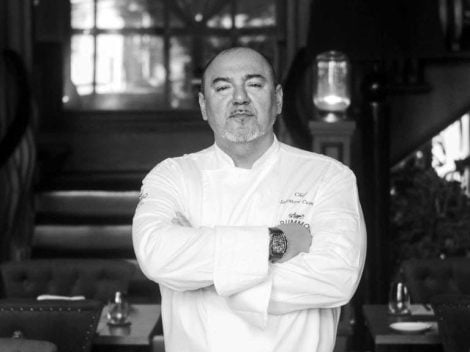Bread and sandwich fillings. Nothing is more ancient, practical, substantial, and delicious. The tradition of stuffing bread slices dates back to ancient times. Greek philosopher Diogenes of Sinope is often depicted eating lentils in a hollowed-out piece of bread. However, the sandwich seems to have gained more widespread popularity in Rome: the name of Via Panisperna derives from the Latin expression panis ac perna, bread and ham, a very popular snack at the time, composed of grape must bread, ham, and dried figs; flavourful, simple, and nutritious. Let's fast forward to 1760: in England, the sandwich arrives, a snack with illustrious origins. It was invented by Lord John Montagu, 4th Earl of Sandwich, who asked his servants to place his dinner, roast beef, between two slices of buttered bread. Rumor has it that he was an inveterate gambler and, as a result, didn't want to leave the gaming table to dine. However, this is of little consequence, considering he created the preogenitor of the modern sandwich, the “tramezzino.”
Italian sandwiches: regional variations
Over time, the sandwich evolved, took shape, and gave rise to numerous variations in Italy and around the world. Today, there is even a celebration for the World Day of the Italian Sandwich. Here are the most famous regional Italian sandwiches.
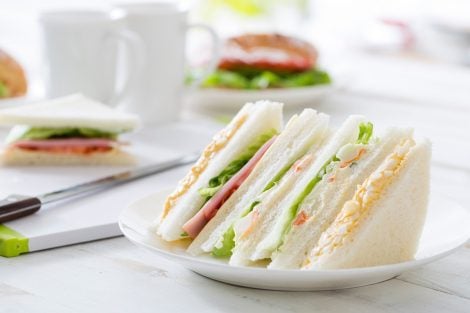
Tramezzino – Piedmont
Similar to the British finger sandwich, the tramezzino originated at the historic Mulassano café, under the arcades of Piazza Castello, in the heart of Turin, where a plaque proudly displays: “In this establishment in 1926, Mrs. Angela Demichelis Nebiolo invented the tramezzino.” A native of Turin who set off for America at the beginning of the 20th century, Demichelis found a husband (also from Piemonte) in Detroit, only to return home in 1925 with the plan to manage a venue with her family. She purchased the café previously owned by Amilcare Mulassano, owner of the famous Sacco Distillery known for its mint syrup, where she introduced several innovations, starting with a machine to make toasted sandwiches. The fortunate insight came a few years later when she decided not to toast the soft bread but simply to fill it with good things, originally butter and anchovies. The name was coined by Gabriele D'Annunzio, drawing inspiration from the “tramezze” (partitions) of the country house, indicating something to eat “in between,” between breakfast and lunch. To make truly delicious ones at home, attention must be paid to the type of bread: the best is “pancarrè,” soft and moist sliced white bread.
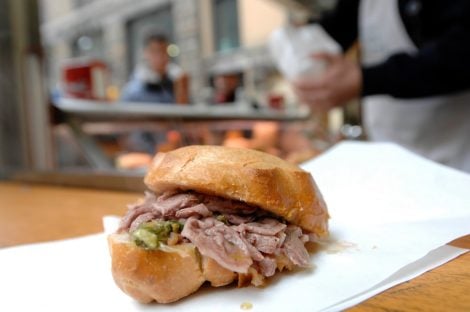
Sandwich with lampredotto - Florence
If there's one thing the Florentines excel at, it's bringing back into the limelight recipes from the traditional, humble cuisine of the past. Like lampredotto, one of the four stomachs of a bovine (the abomasum), boiled and sliced at the moment and eaten in a bread roll soaked in the tasty broth. Thus, the deft knife work of every reputable tripe vendor has entered into the gastronomic lore of Florence, winning over everyone. Stalls and makeshift stands of lampredotto sellers are revered by Florentines as institutions, guardians of ancient practices for the optimal processing of that specific stomach cut, characterised by the purplish colour of the gala, the leanest part of the abomasum, marked by close ridges. Boiled for a long time along with spannocchia, the fattier and softer part, it allows for a balanced and intense taste; the perfect bread? It’s called the semellino, a traditional round roll that’s increasingly hard to find.
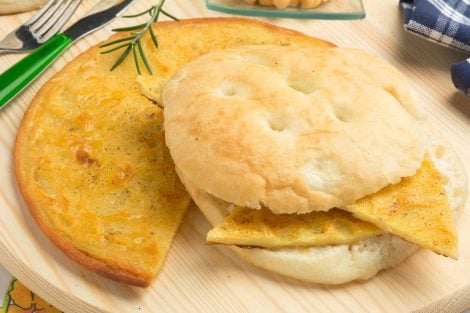
5 e 5 - Livorno
In Livorno, farinata is known as “torta di ceci,” aka 5 e 5. Five cents (of old lira) for the bread and five for the chickpea fritter to put in the sandwich. Today, 5 e 5 is part of the traditional products of Livornese cuisine and is sold by specialised merchants, called “tortai,” but also in pizza by the slice shops and various street food venues. Legend has it that a battle between Genoa and Pisa in 1284 (known as the Battle of Meloria) created the necessary conditions for the farinata recipe to be developed, aided by an unfortunate event: a terrible storm during which, on a Genoese galley, some barrels of olive oil and sacks of chickpea flour spilled, soaking in saltwater. The sailors tried to salvage the supplies, putting everything in a container that, left in the sun, dried the mixture, which turned out to be very good nonetheless.

Porchetta sandwich - Central Italy
Beloved by food enthusiasts and tradition lovers alike, typical of local festivals and village celebrations: it's the king of sandwiches, the panino porchetta, especially widespread in Central Italy, particularly in Lazio and Umbria. The most famous, spiced, and flavourful porchetta comes from Ariccia, the historical epicenter of the production of this pork specialty. A product with an ancient history, dating back to before ancient Rome: in 1950, the porchetta makers from the Castelli, led by Ariccia's mayor Ovidio Cioli, created the first porchetta festival, still a deeply cherished celebration in the area today.
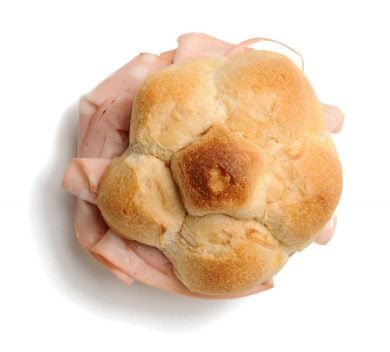
Sandwich with mortadella - Lazio
An enduring classic, perfect for a packed lunch but also an ideal snack at any time: few recipes satisfy the palate like a mortadella sandwich, especially when made with a “rosetta,” a round, hollow bun. A preferred cold cut for many, mortadella was officially born in 1661 when Cardinal Farnese began regulating its production with an edict. The name comes from “murtatum,” the mortar used in Roman times to work meats, while an early version of today's mortadella might be “farcinem insaccatum,” a pork sausage flavoured with myrtle berries, also mentioned by Pliny the Elder. However, the earliest forms of mortadella are found in the Etruscan period, and again in the Middle Ages when the deli meat was sealed with wax. An even more delightful variation of the classic sandwich is pairing it with “pizza bianca”: plain, tomatoless pizza and mortadella, an institution in the Capital.
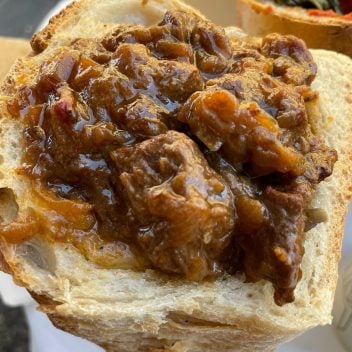
Cuzzetiello - Naples
In Neapolitan households, there's a dispute over who gets the “cuzzetiello,” the end part of the bread loaf, used to dip into the ragù simmering on the stove. Childhood memories that have been relived for several years now thanks to street food stalls and kiosks that have reintroduced the tradition by creating a unique sandwich. Naturally filled with typical sauces: ragù, meatballs in sauce, eggplant parmigiana, escarole and olives, and all the best of Neapolitan cuisine. The use of 'cafone' bread is crucial, naturally leavened and baked in a wood-fired oven, with a thick and crispy crust.
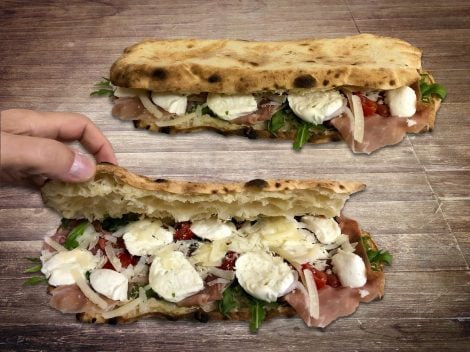
Panuozzo - Naples
Typical of the Monti Lattari region, the panuozzo is an elongated sandwich made with pizza dough, sliced horizontally and filled. Mozzarella and tomatoes, grilled vegetables and scamorza, cold cuts, anchovies, sardines, sausage and “friarielli” (Neapolitan broccoli rabe), provola cheese and mushrooms: there are numerous variations for the fillings, added just before quickly heating the sandwich in the oven. This product was born in 1983 thanks to Giuseppe Mascolo, owner of a pizzeria in Gragnano, who created this narrow and long bread as an alternative to pizza for his children, filling it with bacon and mozzarella. His daughter Pasqualina fell in love with it at first bite and then added it to the menu, renaming it “o' panuozzo.”
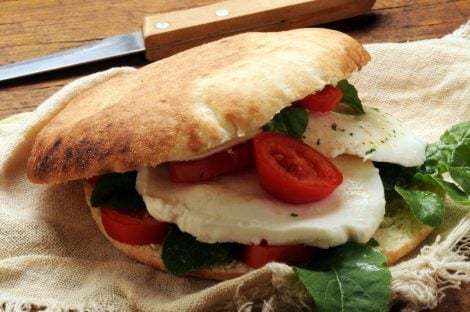
Puccia - Puglia
Typical of the provinces of Lecce and Taranto, puccia is a round bread roll baked in a wood-fired oven, sliced in half and filled with various ingredients. A typical variation from Gallipoli (near Lecce) is the “puccia caddhipulina,” prepared for the eve of the Immaculate Conception feast on December 7th: a soft and tall bread seasoned with capers and salted anchovies. Also famous is the “puccia uliata salentina,” enriched with black brined olives, smaller and more regular in shape. According to legend, the name derives from “buccellatum,” the bread that Roman legionaries ate during military campaigns because it could be preserved for a long time.
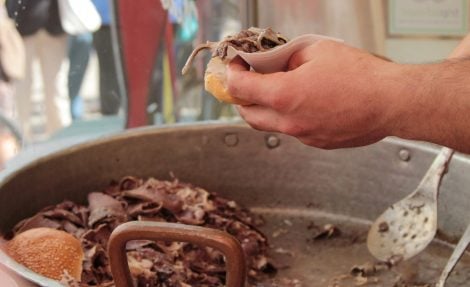
Pani ca' meusa - Palermo
Among the many street foods that stand out in the Palermo scene, the stalls offering “pani ca' meusa” (spleen sandwiches) undoubtedly shine, available in both “schietta” (plain) or “maritata” (married, with caciocavallo cheese and ricotta). These are sandwiches whose recipe is of humble origins born from the habit of Jewish butchers who kept the veal offal for themselves as a reward. All except for the liver, which was considered more precious: hence, they put lung, spleen, and pieces of cartilage in a sandwich, adding ricotta or other cheeses when available.

Pane e panelle - Palermo
Another street food not to miss while on vacation in Palermo is “pane e panelle,” a sandwich filled with small fritters made from chickpea flour. This specialty was already known to the Arabs during their dominion over the island, although at that time it was more of a soft dough of flour and water cooked over a fire. Panelle, as we know them today, were born out of necessity, to feed the people in difficult times with very few ingredients. A fried variant of chickpea farinata, smaller and usually placed inside a sandwich with a sprinkle of lemon.
Panelle recipe
Ingredients
- 250g chickpea flour
- Parsley
- Salt
- Extra virgin olive oil for frying
Instructions
Sift the flour into a bowl and, whisking continuously, dilute it with one litre of cold water.
Dissolve any lumps thoroughly and pour the mixture into a heavy-bottomed saucepan.
Add a generous pinch of salt and place the saucepan over medium heat.
Continuously stirring with a wooden spoon, bring the mixture to a boil and continue cooking the polenta for about twenty minutes until it reaches the consistency of a cream.
Stir continuously as the mixture hardens it can easily stick to the pan.
Towards the end, add a tablespoon of chopped parsley.
Grease a marble surface or a baking sheet with a little olive oil and pour the obtained chickpea “polenta” onto it. Immediately spread it with a spatula to a thickness of about one centimetre and let it cool.
Once cold, it will become compact and firm and can be lifted easily from the cooling surface: cut it into squares or small lozenges and fry in plenty of very hot peanut or sunflower seed oil (175°C) until the panelle turn lightly golden. Drain, place on a double layer of kitchen paper, and serve piping hot inside soft bread rolls topped with sesame seeds.

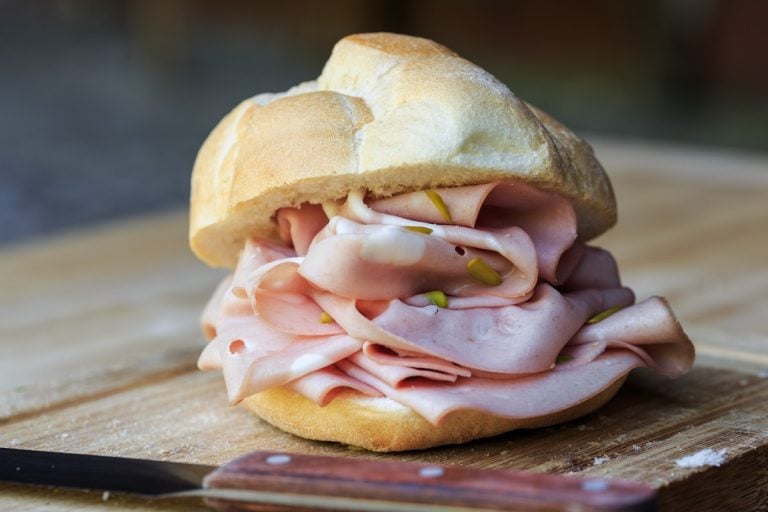
 Women are the best sommeliers. Here are the scientific studies
Women are the best sommeliers. Here are the scientific studies Where to eat at a farm stay in Sicily: the best addresses in the Provinces of Trapani, Palermo, and Agrigento
Where to eat at a farm stay in Sicily: the best addresses in the Provinces of Trapani, Palermo, and Agrigento Wine in cans, bottle-fermented, and alcohol free: the unstoppable change in Gen Z’s tastes
Wine in cans, bottle-fermented, and alcohol free: the unstoppable change in Gen Z’s tastes The great Bordeaux exodus of Chinese entrepreneurs: around fifty Châteaux up for sale
The great Bordeaux exodus of Chinese entrepreneurs: around fifty Châteaux up for sale Dubai speaks Italian: a journey through the Emirate's best Italian restaurants
Dubai speaks Italian: a journey through the Emirate's best Italian restaurants




